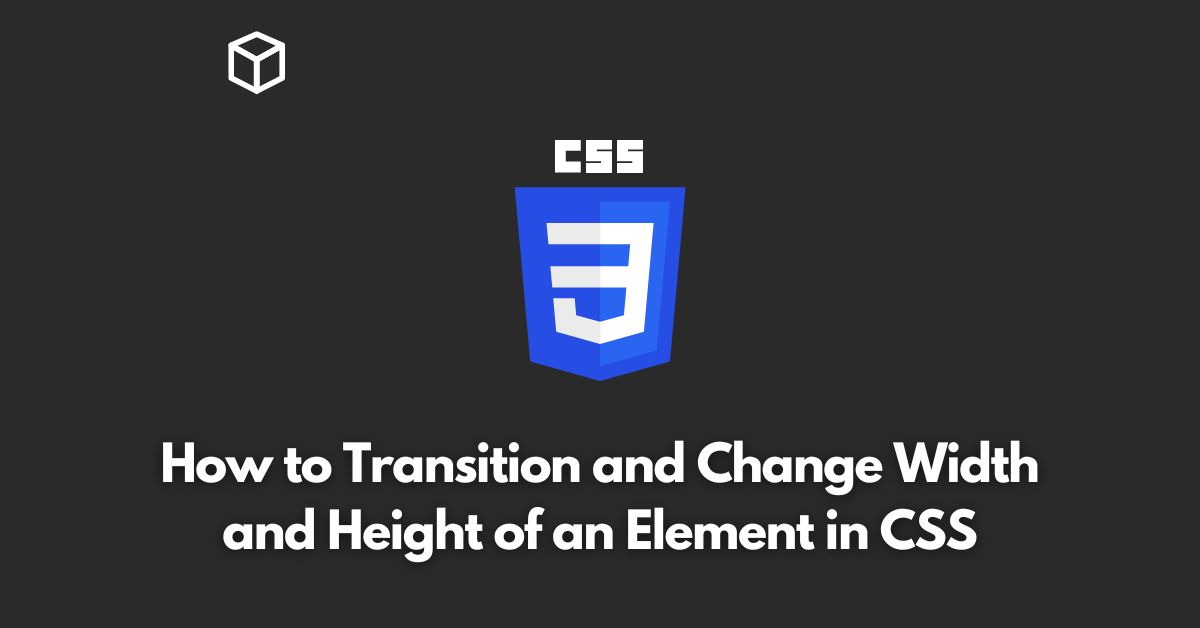CSS (Cascading Style Sheets) is a powerful tool for web designers and developers to create visually appealing and interactive websites.
One of the most commonly used features of CSS is the ability to transition and change the width and height of elements on a website.
In this CSS tutorial, we will explore how to create smooth transitions and change the size of elements using CSS.
Transitioning Elements
Transitions allow designers to create smooth and gradual changes in CSS properties, such as color, background-color, width, and height.
To create a transition, you will need to specify the CSS property that you want to transition, the duration of the transition, and the easing function.
Here is an example of transitioning the width of a button element:
button {
width: 100px;
transition: width 0.5s ease-in-out;
}
button:hover {
width: 200px;
}In this example, when the user hovers over the button, the width will change from 100px to 200px over a period of 0.5 seconds with an ease-in-out effect.
Changing the Width and Height of Elements
To change the width and height of elements, you can use the CSS width and height properties.
The values can be specified in pixels, ems, or percentages.
Here is an example of changing the width and height of a div element:
div {
width: 50%;
height: 200px;
}In this example, the div element will have a width of 50% of the parent container and a height of 200 pixels.
Combining Transitions and Width/Height Changes
You can also combine transitions and width/height changes to create even more dynamic effects.
Here is an example of transitioning the width and height of a div element:
div {
width: 100px;
height: 100px;
transition: width 0.5s ease-in-out, height 0.5s ease-in-out;
}
div:hover {
width: 200px;
height: 200px;
}In this example, when the user hovers over the div element, both the width and height will change from 100px to 200px over a period of 0.5 seconds with an ease-in-out effect.
Conclusion
CSS is a powerful tool that allows designers and developers to create visually appealing and interactive websites.
Transitions and changing the width and height of elements are two powerful features that can be used to create dynamic and engaging user experiences.
By using the techniques outlined in this CSS tutorial, you will be able to create smooth transitions and change the size of elements on your website to create a polished and professional look.




